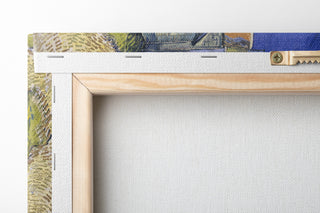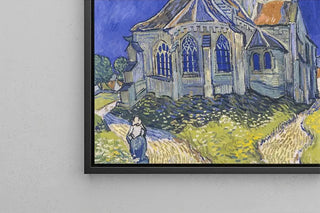Art print Allegory of Prato - Giorgio Vasari | Art print


View from behind

Frame (optional)
The Renaissance theatricality of Allegory of Prato, magnified by Giorgio Vasari
The composition of Allegory of Prato offers a sophisticated balance between allegorical figures and Florentine architecture, where the warm palette blends with controlled chiaroscuro. Vasari employs a precise and narrative brushwork that structures the scene in layered planes, emphasizing gestures and gazes to create a solemn and ceremonial atmosphere. The draperies, golds, and ochres respond to cooler skies, creating spatial depth that captures attention and invites contemplation. This reproduction of Allegory of Prato restores the theatrical presence and finesse of the original drawing, while maintaining the emotional intensity of the painting.
Giorgio Vasari, master of Mannerist Renaissance
Painter, architect, and historian, Giorgio Vasari (1511–1574) holds a central place in late Renaissance art: he formalized the history of artists while producing works marked by Mannerist refinement. Influenced by Michelangelo and the great Florentine workshops, Vasari favored narrative composition and the elegance of elongated figures. His frescoes and panels testify to a broad artistic culture and a concern for documentation, which allowed him to establish a recognizable visual language. Allegory of Prato fits into this trajectory: an aesthetic and intellectual testimony of his time, magnified here by a faithful reproduction of the original.
A decorative acquisition with multiple advantages
Opting for this canvas or art print of Allegory of Prato, carefully reproduced, brings a historical and stylistic presence to any interior. Ideal for a living room, library, office, or dining room, this piece creates a focal point rich in storytelling and elegance. Printed on high-quality supports, the art print of Allegory of Prato preserves the color rendering and fine details, ensuring durability and visual fidelity. Give your space a work that participates in the conversation between art and decor, while highlighting a major signature of the Italian Renaissance.

Matte finish

View from behind

Frame (optional)
The Renaissance theatricality of Allegory of Prato, magnified by Giorgio Vasari
The composition of Allegory of Prato offers a sophisticated balance between allegorical figures and Florentine architecture, where the warm palette blends with controlled chiaroscuro. Vasari employs a precise and narrative brushwork that structures the scene in layered planes, emphasizing gestures and gazes to create a solemn and ceremonial atmosphere. The draperies, golds, and ochres respond to cooler skies, creating spatial depth that captures attention and invites contemplation. This reproduction of Allegory of Prato restores the theatrical presence and finesse of the original drawing, while maintaining the emotional intensity of the painting.
Giorgio Vasari, master of Mannerist Renaissance
Painter, architect, and historian, Giorgio Vasari (1511–1574) holds a central place in late Renaissance art: he formalized the history of artists while producing works marked by Mannerist refinement. Influenced by Michelangelo and the great Florentine workshops, Vasari favored narrative composition and the elegance of elongated figures. His frescoes and panels testify to a broad artistic culture and a concern for documentation, which allowed him to establish a recognizable visual language. Allegory of Prato fits into this trajectory: an aesthetic and intellectual testimony of his time, magnified here by a faithful reproduction of the original.
A decorative acquisition with multiple advantages
Opting for this canvas or art print of Allegory of Prato, carefully reproduced, brings a historical and stylistic presence to any interior. Ideal for a living room, library, office, or dining room, this piece creates a focal point rich in storytelling and elegance. Printed on high-quality supports, the art print of Allegory of Prato preserves the color rendering and fine details, ensuring durability and visual fidelity. Give your space a work that participates in the conversation between art and decor, while highlighting a major signature of the Italian Renaissance.






